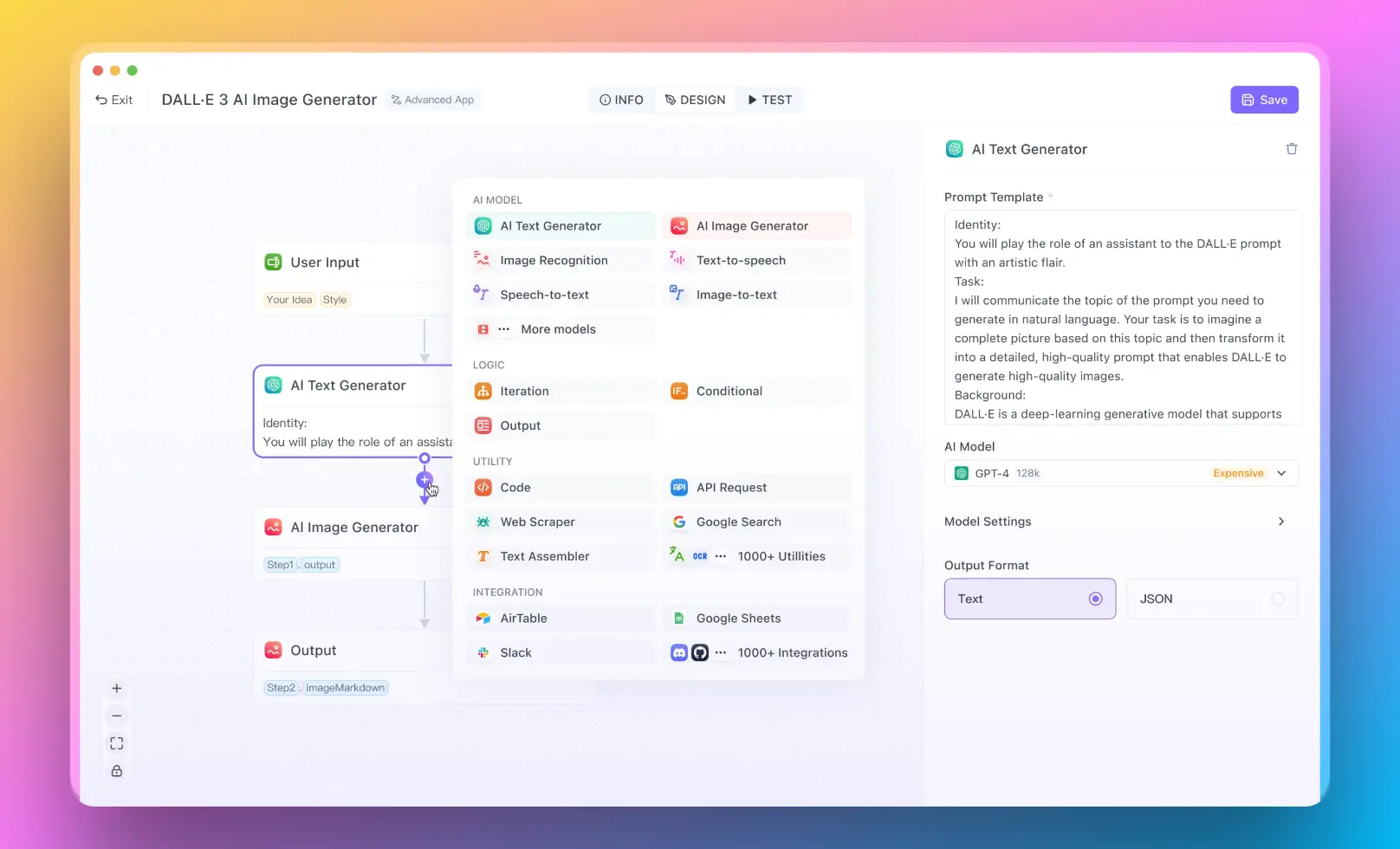Converting CSV (Comma-Separated Values) files to Excel is a common task for data analysts, researchers, and professionals who work with large datasets. Excel provides several methods to import and convert CSV files into a spreadsheet format, making it easier to analyze, manipulate, and visualize data. In this article, we'll explore three different methods to convert CSV to Excel, along with step-by-step instructions and sample codes.
Anakin AI is the Best AI Automation Platform for your AI Automation!
Connect Your Google Sheets to Anakin AI, and build a Customized Workflow with a No Code AI App Builder!
👇👇

Method 1: Using Excel's Built-in Import Feature
Excel has a built-in feature that allows you to import CSV files directly into a spreadsheet. Here's how you can use it:

- Open a new Excel workbook or an existing one.
- Go to the "Data" tab and click on the "Get Data" option (or "Get External Data" in older versions of Excel).
- In the "Get Data" dialog box, select "From File" and then choose "From Text/CSV."
- Navigate to the location of your CSV file, select it, and click "Import."
- In the "Text Import Wizard," you can preview the data and make any necessary adjustments, such as changing the file origin, delimiter, or data format.
- Click "Finish" to import the CSV data into your Excel worksheet.
Method 2: Using Power Query (Get & Transform Data)

Power Query, also known as "Get & Transform Data" in Excel, is a powerful tool that allows you to import, transform, and combine data from various sources, including CSV files. Here's how you can use Power Query to convert CSV to Excel:
- Open a new Excel workbook or an existing one.
- Go to the "Data" tab and click on the "Get Data" option (or "Get & Transform Data" in newer versions of Excel).
- In the "Get Data" dialog box, select "From File" and then choose "From CSV."
- Navigate to the location of your CSV file, select it, and click "Import."
- Power Query will open, and you can preview the data and make any necessary transformations, such as removing columns, changing data types, or applying filters.
- Once you're satisfied with the transformations, click "Close & Load" to import the transformed CSV data into your Excel worksheet.
Method 3: Using VBA (Visual Basic for Applications)

If you need to automate the process of converting CSV to Excel or perform more advanced operations, you can use VBA (Visual Basic for Applications) in Excel. Here's a sample VBA code that imports a CSV file into a new Excel worksheet:
Sub ImportCSV()
Dim FilePath As String
Dim FileName As String
Dim WorkbookName As String
Dim Worksheet As Worksheet
' Prompt the user to select the CSV file
FilePath = Application.GetOpenFilename("CSV Files (*.csv), *.csv", , "Select CSV File")
' Exit the sub if no file is selected
If FilePath = "False" Then Exit Sub
' Get the file name and workbook name
FileName = Dir(FilePath)
WorkbookName = Left(FileName, InStrRev(FileName, ".") - 1)
' Create a new workbook and worksheet
Workbooks.Add
Set Worksheet = ActiveSheet
' Import the CSV file into the worksheet
With Worksheet.QueryTables.Add(Connection:="TEXT;" & FilePath, Destination:=Worksheet.Range("A1"))
.Name = WorkbookName
.FieldNames = True
.RowNumbers = False
.FillAdjacentFormulas = False
.PreserveFormatting = True
.RefreshOnFileOpen = False
.RefreshStyle = xlInsertDeleteCells
.SavePassword = False
.SaveData = True
.AdjustColumnWidth = True
.RefreshPeriod = 0
.TextFilePromotNumToText = False
.TextFilePlatform = 437
.TextFileStartRow = 1
.TextFileParseType = xlDelimited
.TextFileTextQualifier = xlTextQualifierDoubleQuote
.TextFileConsecutiveDelimiter = False
.TextFileTabDelimiter = False
.TextFileSemicolonDelimiter = False
.TextFileCommaDelimiter = True
.TextFileSpaceDelimiter = False
.TextFileColumnDataTypes = Array(1, 1, 1, 1)
.TextFileTrailingMinusNumbers = True
.Refresh BackgroundQuery:=False
End With
End Sub
To use this code, open the Visual Basic Editor in Excel (Alt + F11), create a new module, paste the code, and run the ImportCSV sub-routine. You'll be prompted to select the CSV file you want to import, and the data will be imported into a new worksheet in the current Excel workbook.
These are just a few methods to convert CSV to Excel. Depending on your specific requirements, you can choose the method that best suits your needs. Excel provides a wide range of tools and features to work with CSV files, making it a versatile and powerful tool for data analysis and manipulation.
FAQ: Converting CSV Files to Excel
How do I convert a CSV file to Excel?
To convert a CSV file to Excel, follow these steps:
- Open a new Excel workbook or an existing one.
- Go to the "Data" tab and click on the "Get Data" option (or "Get External Data" in older versions of Excel).
- In the "Get Data" dialog box, select "From File" and then choose "From Text/CSV."
- Navigate to the location of your CSV file, select it, and click "Import."
- In the "Text Import Wizard," you can preview the data and make any necessary adjustments, such as changing the file origin, delimiter, or data format.
- Click "Finish" to import the CSV data into your Excel worksheet.
How do I automatically open a CSV file in Excel with columns?
To automatically open a CSV file in Excel with columns, follow these steps:
- Open a new Excel workbook or an existing one.
- Go to the "Data" tab and click on the "Get Data" option (or "Get External Data" in older versions of Excel).
- In the "Get Data" dialog box, select "From File" and then choose "From Text/CSV."
- Navigate to the location of your CSV file, select it, and click "Import."
- In the "Text Import Wizard," make sure the "Delimited" option is selected, and check the "My data has headers" box to ensure that the first row of your CSV file is treated as column headers.
- Click "Finish" to import the CSV data into your Excel worksheet with columns.
How to open .CSV file in Excel?
To open a CSV file in Excel, follow these steps:
- Open a new Excel workbook or an existing one.
- Go to the "File" menu and select "Open."
- In the "Open" dialog box, navigate to the location of your CSV file.
- In the "File Type" dropdown menu, select "Text Files" or "All Files."
- Select your CSV file and click "Open."
- In the "Text Import Wizard," you can preview the data and make any necessary adjustments, such as changing the file origin, delimiter, or data format.
- Click "Finish" to import the CSV data into your Excel worksheet.
How do I convert a CSV file to rows in Excel?
To convert a CSV file to rows in Excel, follow these steps:
- Open a new Excel workbook or an existing one.
- Go to the "Data" tab and click on the "Get Data" option (or "Get External Data" in older versions of Excel).
- In the "Get Data" dialog box, select "From File" and then choose "From Text/CSV."
- Navigate to the location of your CSV file, select it, and click "Import."
- In the "Text Import Wizard," make sure the "Delimited" option is selected, and uncheck the "My data has headers" box to ensure that the first row of your CSV file is treated as data.
- Click "Finish" to import the CSV data into your Excel worksheet as rows.

